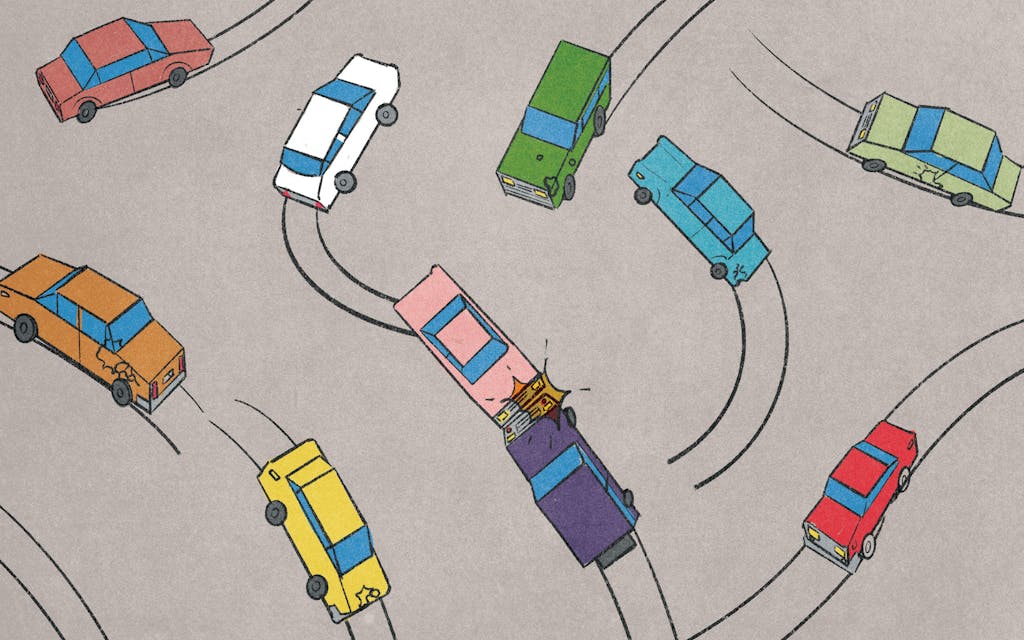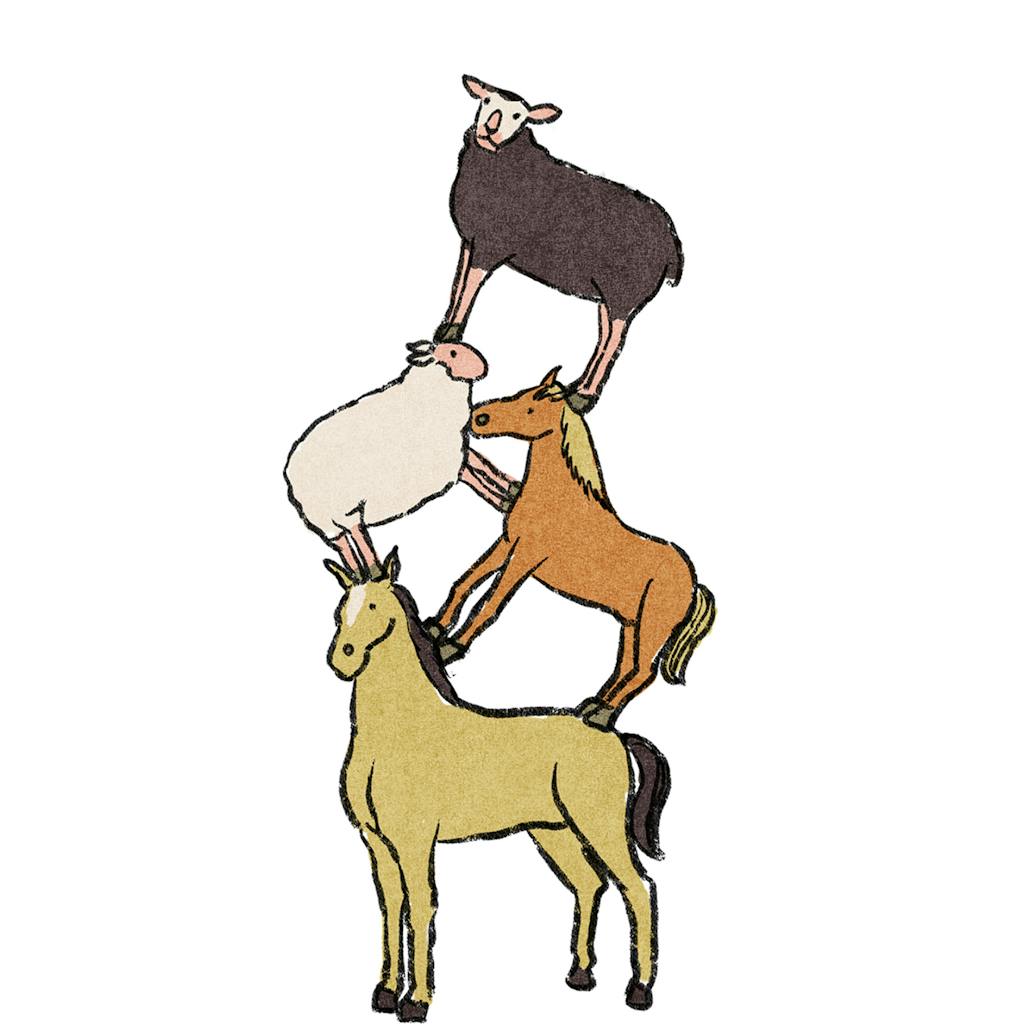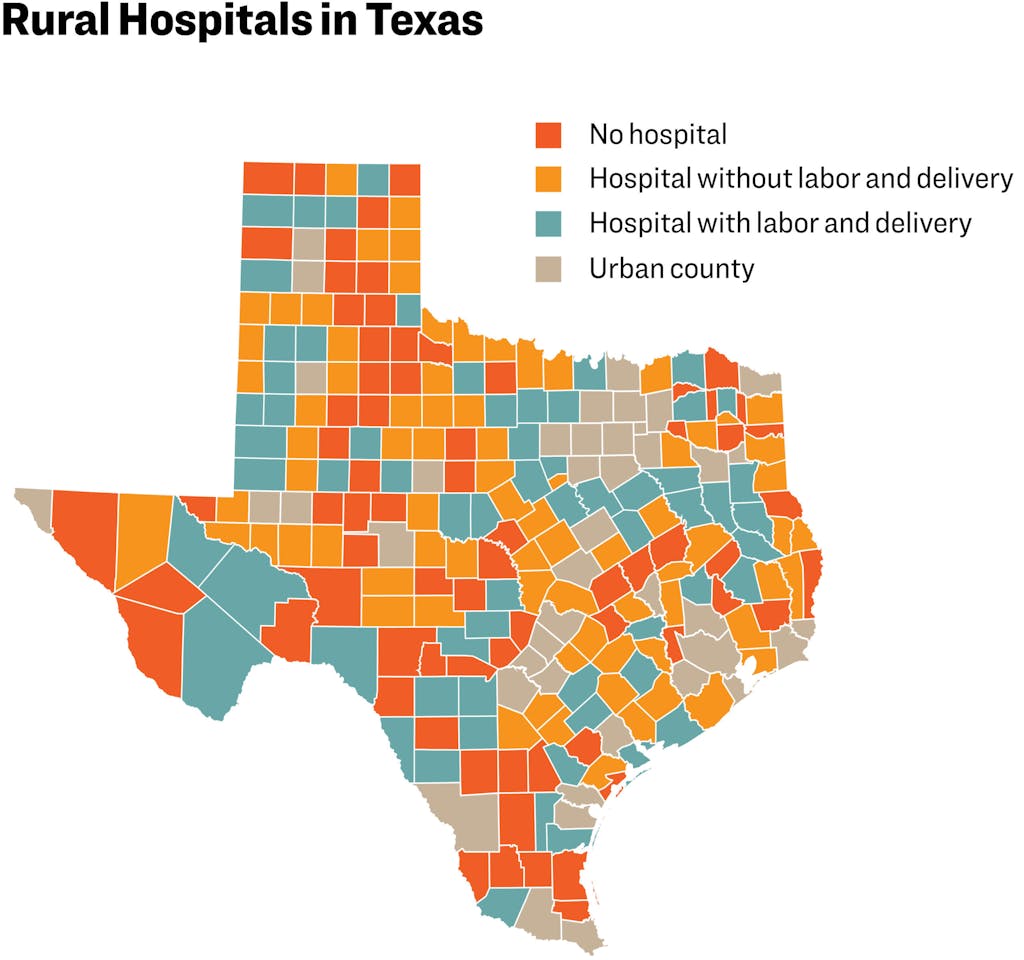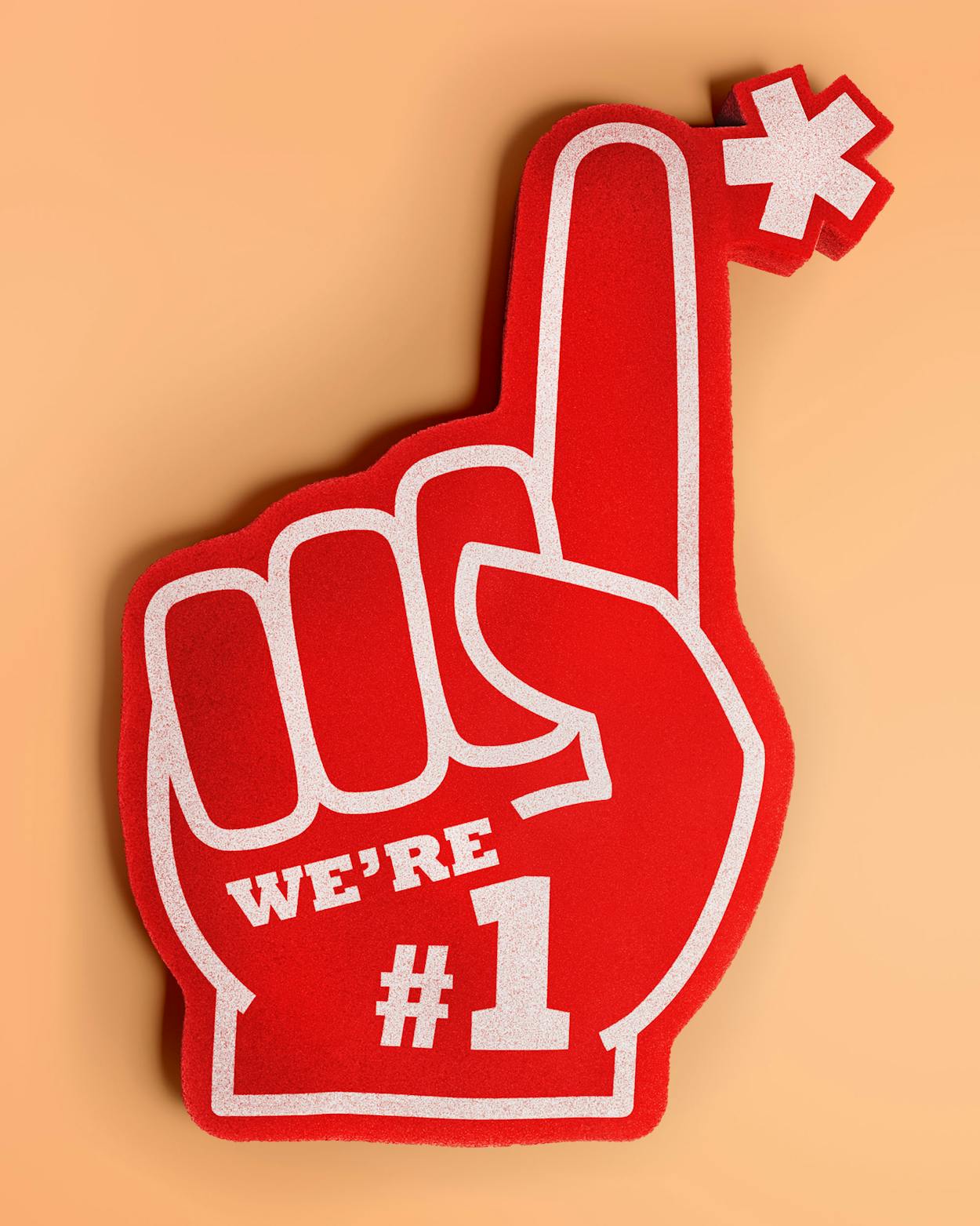The Lone Star State has always been a land of extremes. The weather, the miles and miles (and miles) of Texas, the dramatic history that’s more eventful than that of some full-fledged nations. There’s a reason—many reasons, in fact—why we’re always crowing about ourselves and why so many outside our borders can’t help but find themselves concurring.
Some of this is hopelessly subjective—how, exactly, do you measure freedom or opportunity or the quality of a people’s character? But some of it comes down to cold, hard numbers. And if you’re looking for objective, quantifiable categories in which Texas comes out ahead of the other 49 states—the theme of this feature—we’ve got one heck of a list.
The topics gathered here range all over the place, from energy production and shrimp harvests to the number of golfers who have become Masters champions. In a few cases we rank so high partly because there are just so dang many Texans running around this enormous state. (As many Texas schoolchildren can tell you, we have forty times more people than the only state that’s bigger in area, and we’re 68 percent bigger than the only state with more people.) But we’ve also included some categories where Texans honor ourselves on a per capita basis.
Or, as the case may be, dishonor ourselves. Though there are many categories we can take pride in, there are also plenty that feel like badges of shame. Everything (well, nearly everything) is bigger in Texas—the good, the bad, and the statistically complicated.
—Dan Solomon
We’re Number One in Business! (Or Are We?)
Elon Musk is just one of the big-deal CEOs moving to the Lone Star State. But some are reluctant to join him.
On a recent Tuesday morning, as he presided over the ribbon cutting for a new golf resort in Frisco, Governor Greg Abbott sat on a dais behind a sign that read “CREATING JOBS.” Chief Executive magazine had just announced, for the twenty-third consecutive year, that its annual survey of U.S. chief executives had named Texas the number one state for business, and Abbott didn’t hold back in trumpeting the news. He compared his nine-year record as governor to the career of the University of Alabama’s famous head football coach. “I have won nine national championships for economic development, more national championships than Nick Saban has won,” he said. “With projects like this, I will have a ring for every single finger.”
He had plenty of reasons to gloat. A year earlier, Texas had leapfrogged California and New York to become the home state of the greatest number of Fortune 500 companies, at 53. Last year alone, Texas attracted more than one thousand corporate relocations and expansions, according to Business Facilities magazine, which ranked the state first in the nation for “business climate.”
Continue reading here.

Horton Bans a Book
Why aren’t the folks who were up in arms about the Dr. Seuss estate’s self-censorship bothered by Texas purging so many works from our libraries?
Why aren’t the folks who were up in arms about the Dr. Seuss estate’s self-censorship bothered by Texas purging so many works from our libraries?
You may remember way back in 2021, when some of Texas’s political leaders fervently opposed the idea of book bans. The topic at the time was the decision of Dr. Seuss Enterprises to withdraw a handful of the author’s titles that included racist stereotypes. In protest against what he called the cancel culture mob, Texas senator Ted Cruz sold signed copies of Green Eggs and Ham on one of his donation sites.
But as right-wing activists stirred panic over “woke culture,” weaponizing normal parental concern about exposing children to adult content, schools and libraries banned hundreds of books. Yet though no state’s schools have been more enthusiastic about banning books than those in Texas, Cruz’s concern over censorship seems to have made itself as scarce as the mama bird in Horton Hatches the Egg.
Which is too bad, given what’s been going on in his home state. According to a list compiled by the literature and human rights nonprofit PEN America, between July 1, 2021, and late last year, Texas saw 1,239 book bans—more than any other state, and 316 more than the runner-up state, Florida. These figures refer not to individual titles but rather to the number of times any school district has issued a ban of a book. So when nine schools banned Maia Kobabe’s award-winning comic book memoir Gender Queer, that counted as nine bans. Then again, it’s entirely possible that more than 1,239 books have been banned in Texas; as PEN America notes, that number represents just the incidents that have been reported to the group. It’s likely that some bans have flown beneath its radar.
Some books are banned in school libraries, others in classrooms. Some are restricted to certain grade levels. Some have been removed pending investigations that school districts may not have the resources to conduct in a timely manner. Most have been banned by administrators, while others are the result of a formal challenge from a parent or community member.
What sort of books have been banned? They include ones about gender identity, sex, race, and political violence, as well as books that were banned for reasons that aren’t clear.
Or to put it in language that Ted Cruz would appreciate:
Texas has banned books about boys and books about girls, and books where the gender is more of a swirl. It’s banned books about sex and books about race, and books about those whose white hoods hide their face. It’s banned classics and new books, and books in between; best-sellers, prize winners, and books rarely seen. It’s banned books on what the Nazis did to the Jews, and beloved old books by the great Judy Blume. It’s banned comics and prose books and books full of poems; it’s banned slim books and tall books and hefty old tomes. Of the multitudes of books a child might read, Texas has banned hundreds of books, yes, indeed!
Texas Monthly staffer Dan Solomon feels pretty confident that someone, somewhere in Texas, will ban his new young adult novel, The Fight for Midnight.

Baby, You Can Drive My Car (Poorly)
All Americans imagine their state boasts the nation’s worst drivers—but Texas has the stats.
No, you’re not imagining it, fellow Texans: some of us are terrible drivers, as likely to run a fellow motorist off the road as we are to offer a friendly “hi sign.” And we’re not just talking about fender benders. According to data collected by the Insurance Institute for Highway Safety, we trounce the competition in the number of fatal car crashes. In 2021, 4,068 such incidents occurred in Texas—even more than in California, which has a much larger population.
In particular, you should be very careful in Dallas, which the Austin-based driving-education website Aceable, drawing on Texas Department of Transportation and U.S. Census Bureau data, ranked in 2018 as the most dangerous place in Texas to drive, followed by Beaumont, Odessa, Fort Worth, and Wichita Falls. (Not-so-fun fact: TxDOT tells us that rural areas, home to 16 percent of the state’s population, accounted in 2022 for more than half of our automobile fatalities.)
The least dangerous places? Allen, the Woodlands, Frisco, Pearland, and Sugar Land, according to Aceable. Maybe that’s another reason to head to the suburbs, if you haven’t already. Just keep your eyes peeled on the way over.
—Katy Vine
When It Comes to People Behind Bars, We’re Way Ahead
Texas keeps putting convicts away. And lawmakers want those numbers to rise.
The Texas frontier was a lawless place, so the early waves of white settlers dealt with suspected wrongdoers the way the Old Testament told them to. Even as other states found alternatives to the lash, Texas—whose prison system had its roots in the East Texas cotton fields and the convict-leasing apparatus that replaced slavery—didn’t back down from “an eye for an eye.” For years our elected officials—sheriffs, district attorneys, judges, and governors—have won office by promising to be tough on crime. The most infamous metric for this is that we’re the number one state in executions. Since 1976, when the Supreme Court declared the death penalty was once again constitutional, we’ve killed nearly five times more convicts than Oklahoma, our nearest competitor. (Our northern neighbor, however, executes more prisoners per capita than we do; we’re number two by that measure.)
Continue reading here.

What Walks on Four Legs and Has 14,667,100 Heads?
Hint: it’s not a chupacabra.
Population-wise, Texas isn’t a rural state and hasn’t been for a long time. Even as far back as 1950, the majority of Texans lived in urban areas; today, 84 percent of us do. But looking at a map, of course, tells a different story: 83 percent of our land is rural, and we’ve got the livestock to show it. When it comes to cattle (12,500,000 head, including calves), goats (725,000), horses (767,100), and sheep (675,000), Texas has more than any other state—they even outnumber newly arrived Californians.
—Dan Solomon
Medican’t
More than one in six Texans lack health insurance, the highest rate in the country. Behind the statistics are countless human beings experiencing unnecessary suffering.
Royce Reed was once a star shooting guard on the basketball team at Bellaire High School. When he came to see me at the emergency room at Houston’s Ben Taub Hospital last October, he wore red warm-up pants, the kind with snaps on the side so he could tear them off at a moment’s notice and enter the game—or, in this case, change into a hospital gown. I needed only to unfasten the two snaps on the bottom to see what had brought him here. The middle three toes of his right foot had been stripped of their skin and underlying fat, and there was a wound the size of a silver dollar coin on his heel. Royce, who was 44, was suffering from an infection in his foot bones that made it nearly impossible for him to walk.
Continue reading here.
Our Rural Hospitals Are on Life Support
A cascade of closures is creating health care deserts in much of the state.
Texas has the largest rural population in the nation, which means that the crisis that has hit rural hospitals across the country is striking us especially hard. Rising medical costs, low patient numbers, and staffing struggles have led to 152 rural hospitals in the U.S. closing or converting to outpatient facilities since 2010. Twenty-six of those were in Texas, more than in any other state. (Tennessee has seen the highest percentage of its rural hospitals close. We’re number six by that metric.) Why has Texas fared so badly? Our refusal to expand Medicaid plays a large part. The eight states with the highest levels of rural hospital closures between 2010 and 2021 had all declined to expand their Medicaid programs, shutting the door to federal aid that has helped keep hospitals open in other states.
—Will Bostwick

We’re Number One in Renewable Energy and Nonrenewable Energy
Why Texas is the past, present, and future when it comes to fueling the world.
Drive south from the Oklahoma Panhandle and the first thing that greets you, after the large green “Welcome to Texas” sign, is the nation’s largest wind farm. Head south for another five hours until you’re nearly in Midland, and you can take in the nation’s largest solar farm—well, the largest for now. In far northeast Texas, close to Arkansas and Oklahoma, another one is under construction that will eventually be the biggest in the country.
Texas generates more electricity from wind and sun than any other state and has since 2006. It ain’t even close. In 2021 Texas’s output was more than double that of the runner-up, a sizable state that hugs the Pacific Ocean and likes to boast about how green it is.
Continue reading here.

Wait, Is Texas . . . a Golf State?
Fore!
Yes, Texas is a football state, and a rodeo state through and through. But it’s also the number one golf state in the country. The state with the most inductees into the World Golf Hall of Fame? Texas, with fifteen, including such familiar names as Jack Burke Jr., Ben Crenshaw, Sandra Haynie, Ben Hogan, Byron Nelson, Lee Trevino, Kathy Whitworth, and Babe Didrikson Zaharias. The state with the most Masters champions? Texas. Ten Lone Star State residents have won the tournament fifteen times.
What’s more, two of the three bridges at Augusta National—where the Masters is played each spring—are named for Hogan and Nelson. Oh, and what is widely believed to be the best-selling golf instruction guide of all time? Harvey Penick’s Little Red Book, cowritten by the beloved Austin pro mentioned in the title and the celebrated Texas novelist and sportswriter Edwin “Bud” Shrake.
Why has Texas made such a mark on the royal and ancient game? One theory claims that the state’s favorable climate for year-round play—and our sometimes unfavorable climate: we play in conditions that range from cold to hot to dry to wet to windy—prepares a golfer to hit every possible shot in the proverbial bag.
So maybe it’s time for more Texans to embrace their inner Ben Hogan, add a few golf shirts to their collections of old Dallas Cowboys jerseys, and get out on the course. Heck, maybe the time has come for a TV show set on the Texas fairways. “Friday Night Links,” anyone?
—David Courtney

The Roads Go On Forever
Or at least it seems that way. Let’s try to imagine what, exactly, more than a half-million miles of asphalt looks like.
Texas has 698,839 miles of road lanes, which is more than any other state in the country. That’s almost 300,000 more than the runner-up, California, and more than twice as many as thirdplace finisher Illinois (which, to be fair, is punching way above its weight, given that it’s the twenty-fourth largest state by area).
But what, exactly, does 698,839 miles of road look like? How can we hold it in our heads and contemplate its enormity? To help us grasp the concrete—or, rather, asphalt—reality of this colossal figure, we offer some helpful equivalencies.
Driving from Amarillo to Harlingen and back: 1,522 miles
One lap around the Earth: 24,901 miles
A hundred round-trip drives from El Paso to Beaumont: 165,920 miles
Every American adult lined up and holding hands: 275,797 miles
Potential life of a good F-150: 300,000 miles
Radius of the sun: 435,000 miles
Distance to the moon and back: 477,710 miles
The distance a commercial jet would fly in 50 days without stopping: 600,000 miles
Total length of road lanes in Texas: 698,839 miles
Or to put it another way . . .
698,839 miles of Texas roads would cover the same distance as:
Floating the mile-long lazy river at Waco Surf 698,839 times.
Rerunning Vince Young’s historic 14-yard game-winning sprint against USC in the 2006 Rose Bowl 87,853,996 times.
Stacking 4,919,842 Towers of the Americas on top of one another.
—Jeff Salamon
But Wait, There’s Less!
Wounding as it may be to our deeply ingrained sense of Texas exceptionalism, there are a number of seemingly Texas-y categories in which we don’t take the top spot. Here are a few.
Barbecue
When it comes to quality, we have no doubt that Texas has the best barbecue in the country. When it comes to quantity, though, as of 2014 Oklahoma and Georgia had more barbecue joints per capita, and barbecue spots made up a higher percentage of restaurants in Alabama, Arkansas, Georgia, Tennessee, and Mississippi. I mean, if you call that barbecue.
Billionaires
The world’s second-richest person (Elon Musk), twenty-first-richest person (Walmart heiress Alice Walton), and twenty-third-richest person (Michael Dell) live in Texas. But the 73 billionaires who call the Lone Star State home don’t get us to the top of this list; California, New York, and Florida all have more. And we rank even lower—number ten—on a per capita basis. Though we’ll admit we don’t feel all that intimidated by sparsely populated Montana’s four—count ’em, four—billionaires.
Continue reading here.











